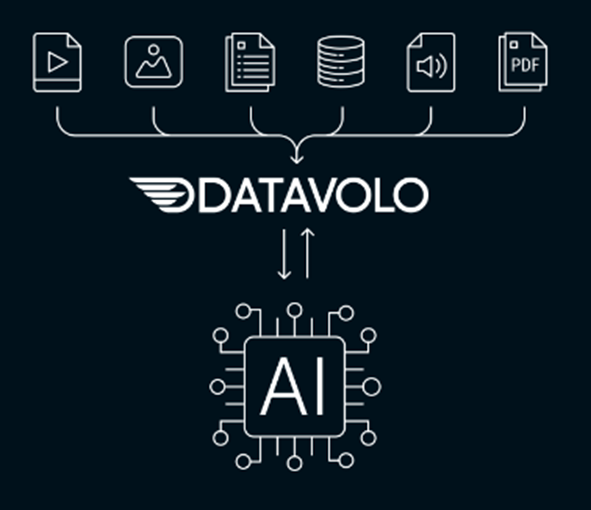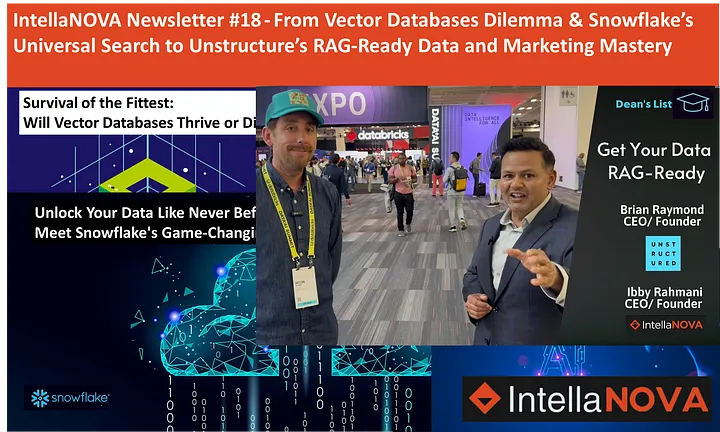
Dean’s List #22: Unleashing the Power of Multimodal Data: How Datavolo is Making Data Engineers 10x More Effective
Introduction
At the forefront of innovation in data engineering, Datavolo is tackling one of the most pressing challenges in AI today. That is, integrating large language models (LLMs) seamlessly into enterprise applications. During the Databricks Data + AI Summit, I had the opportunity to talk Sam Lachterman, who is the Chief Technology Officer at Datavolo. He shared insights into how their platform empowers data engineers to build smarter, faster, and more efficient AI-driven applications.

The Challenge: Customizing AI in a Complex Landscape
The explosion of LLMs has opened up transformative opportunities for enterprises. However, this innovation brings challenges, particularly for data engineers tasked with managing unstructured and multimodal data, such as text, tables, and figures. They had to manage this diverse set of data while ensuring smooth AI integration. While some teams attempt to solve these issues by building custom pipelines, Lockman warns that this DIY approach carries risks like scalability limitations, high costs, and long-term technical debt.
Datavolo’s Game-Changing Solution
Enter Datavolo, a purpose-built data engineering platform designed to handle the complexity of modern AI workflows. Lockman describes the platform as offering “multimodal data pipelines for AI,” Something that simplifies data transformation and integration for real-world use cases.

What Sets Datavolo Apart?
Unlike traditional tools or custom-built pipelines, Datavolo focuses on:
- Multimodal Data Processing: Supporting unstructured data formats that includes narrative text, tabular data, and visuals, all within a single workflow.
- Optimized Data Pipelines: Tailored transformations that drive data into AI models to ensure high-quality results for generative AI applications.
- Risk Mitigation: Eliminate the pitfalls of custom coding by offering a robust, ready-to-use platform.
“Datavolo empowers data engineers to become 10x more effective by automating and streamlining the hardest parts of the AI development process,” Lockman emphasized.
Use Cases: Driving Impact Across Industries
Key use cases where Datavolo has made a tangible difference:
- Financial Services: Automating claims processing, mortgage validation, and financial statement analysis. Engineers have traditionally restored to manual effort.
- Document-Heavy Workflows: Transforming complex documents with embedded tables, text, and figures into actionable insights.
“From banks to enterprises dealing with compliance workflows, Datavolo makes AI integration seamless, regardless of the complexity of the data,” Lockman explained.

The Future of AI-Driven Workflows
As AI adoption continues to surge, platforms like Datavolo are poised to play a critical role in democratizing access to advanced capabilities. By eliminating bottlenecks in data processing and simplifying LLM integration, Datavolo is redefining how enterprises build and scale AI applications.

Closing Thoughts
Sam Lockman’s vision for Datavolo is clear: to be the go-to platform for enterprises looking to supercharge their data engineering efforts. With a commitment to making complex AI workflows simpler and more accessible, Datavolo is helping companies unlock the full potential of their data.
“Multimodal data pipelines for AI — that’s what Datavolo stands for,” Lockman concluded. “We’re here to make data engineers 10x more effective.”
Call-to-Action:
Ready to accelerate your AI applications with multimodal data pipelines? Learn more about how Datavolo can transform your workflows and empower your team to achieve unparalleled efficiency.
What are the biggest challenges you face in integrating LLMs into your workflows? Let’s discuss below!
To watch the interview by IntellaNOVA on youtube, then click here




